Semantic Categories in the Domain of Motion Verbs by Adult Speakers of Danish, German, and Turkish
DOI:
https://doi.org/10.13092/lo.61.1276Abstract
Languages differ in the ways they divide the world. This study applies cluster analysis to understand how and why languages differ in the way they express motion events. It further lays out what the parameters of the structure of the semantic space of motion are, based on data collected from participants who were adult speakers of Danish, German, and Turkish. The participants described 37 video clips depicting a large variety of motion events. The results of the study show that the segmentation of the semantic space displays a great deal of variation across all three groups. Turkish differs from German and Danish with respect to the features used to segment the semantic space – namely by using vector orientation. German and Danish differ greatly with respect to (a) how fine-grained the distinctions made are, and (b) how motion verbs with a common Germanic root are distributed across the semantic space. Consequently, this study illustrates that the parameters applied for categorization by speakers are, to some degree, related to typological membership, in relation to Talmy's typological framework for the expression of motion events. Finally, the study shows that the features applied for categorization differ across languages and that typological membership is not necessarily a predictor of elaboration of the motion verb lexicon.Downloads
Download-Daten sind nocht nicht verfügbar.
Veröffentlicht
2014-02-12
Ausgabe
Rubrik
Artikel/Articles
Lizenz
Copyright (c) 2013 Moiken Jessen

Dieses Werk steht unter der Lizenz Creative Commons Namensnennung 3.0 International.
Zitationsvorschlag
Jessen, M. (2014). Semantic Categories in the Domain of Motion Verbs by Adult Speakers of Danish, German, and Turkish. Linguistik Online, 61(4). https://doi.org/10.13092/lo.61.1276


